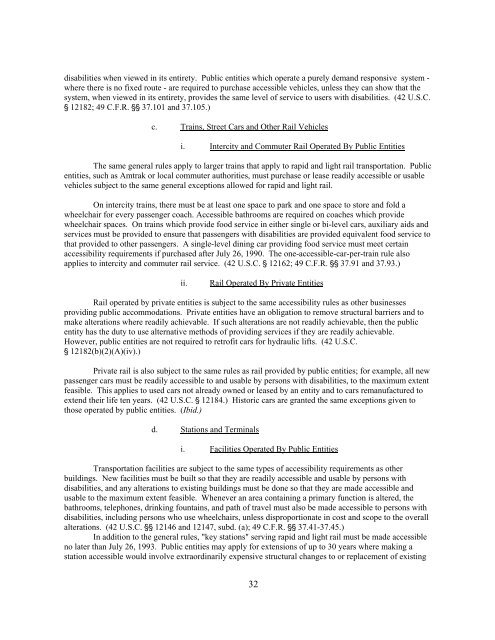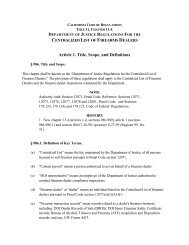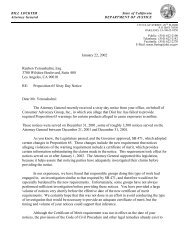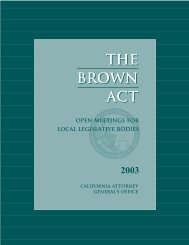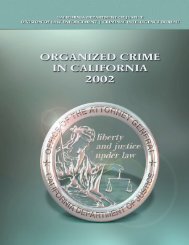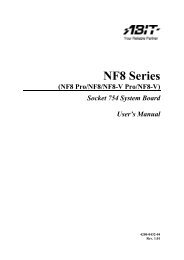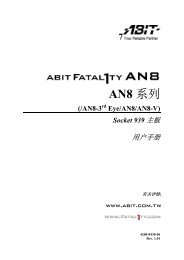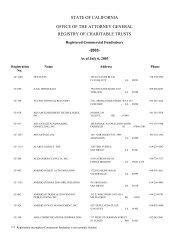Legal Rights of Persons With Disabilities - Ossh.com
Legal Rights of Persons With Disabilities - Ossh.com
Legal Rights of Persons With Disabilities - Ossh.com
You also want an ePaper? Increase the reach of your titles
YUMPU automatically turns print PDFs into web optimized ePapers that Google loves.
disabilities when viewed in its entirety. Public entities which operate a purely demand responsive system -<br />
where there is no fixed route - are required to purchase accessible vehicles, unless they can show that the<br />
system, when viewed in its entirety, provides the same level <strong>of</strong> service to users with disabilities. (42 U.S.C.<br />
' 12182; 49 C.F.R. '' 37.101 and 37.105.)<br />
c. Trains, Street Cars and Other Rail Vehicles<br />
i. Intercity and Commuter Rail Operated By Public Entities<br />
The same general rules apply to larger trains that apply to rapid and light rail transportation. Public<br />
entities, such as Amtrak or local <strong>com</strong>muter authorities, must purchase or lease readily accessible or usable<br />
vehicles subject to the same general exceptions allowed for rapid and light rail.<br />
On intercity trains, there must be at least one space to park and one space to store and fold a<br />
wheelchair for every passenger coach. Accessible bathrooms are required on coaches which provide<br />
wheelchair spaces. On trains which provide food service in either single or bi-level cars, auxiliary aids and<br />
services must be provided to ensure that passengers with disabilities are provided equivalent food service to<br />
that provided to other passengers. A single-level dining car providing food service must meet certain<br />
accessibility requirements if purchased after July 26, 1990. The one-accessible-car-per-train rule also<br />
applies to intercity and <strong>com</strong>muter rail service. (42 U.S.C. ' 12162; 49 C.F.R. '' 37.91 and 37.93.)<br />
ii.<br />
Rail Operated By Private Entities<br />
Rail operated by private entities is subject to the same accessibility rules as other businesses<br />
providing public ac<strong>com</strong>modations. Private entities have an obligation to remove structural barriers and to<br />
make alterations where readily achievable. If such alterations are not readily achievable, then the public<br />
entity has the duty to use alternative methods <strong>of</strong> providing services if they are readily achievable.<br />
However, public entities are not required to retr<strong>of</strong>it cars for hydraulic lifts. (42 U.S.C.<br />
' 12182(b)(2)(A)(iv).)<br />
Private rail is also subject to the same rules as rail provided by public entities; for example, all new<br />
passenger cars must be readily accessible to and usable by persons with disabilities, to the maximum extent<br />
feasible. This applies to used cars not already owned or leased by an entity and to cars remanufactured to<br />
extend their life ten years. (42 U.S.C. ' 12184.) Historic cars are granted the same exceptions given to<br />
those operated by public entities. (Ibid.)<br />
d. Stations and Terminals<br />
i. Facilities Operated By Public Entities<br />
Transportation facilities are subject to the same types <strong>of</strong> accessibility requirements as other<br />
buildings. New facilities must be built so that they are readily accessible and usable by persons with<br />
disabilities, and any alterations to existing buildings must be done so that they are made accessible and<br />
usable to the maximum extent feasible. Whenever an area containing a primary function is altered, the<br />
bathrooms, telephones, drinking fountains, and path <strong>of</strong> travel must also be made accessible to persons with<br />
disabilities, including persons who use wheelchairs, unless disproportionate in cost and scope to the overall<br />
alterations. (42 U.S.C. '' 12146 and 12147, subd. (a); 49 C.F.R. '' 37.41-37.45.)<br />
In addition to the general rules, "key stations" serving rapid and light rail must be made accessible<br />
no later than July 26, 1993. Public entities may apply for extensions <strong>of</strong> up to 30 years where making a<br />
station accessible would involve extraordinarily expensive structural changes to or replacement <strong>of</strong> existing<br />
32


